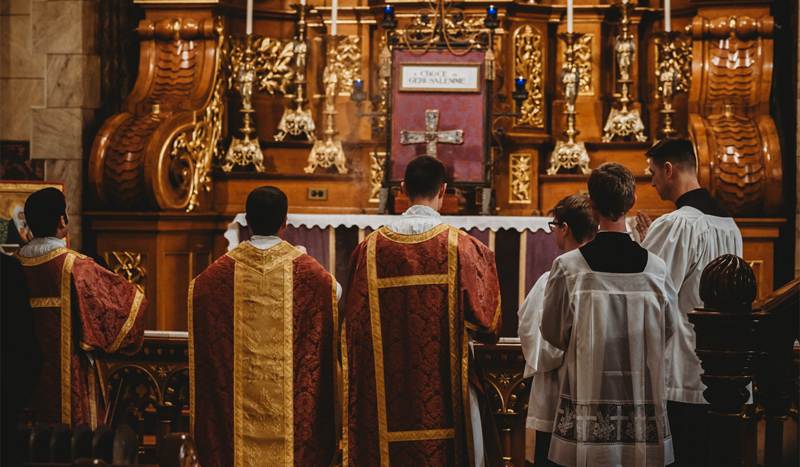
Photo Credit: LatinMassPhotographer
CV NEWS FEED // A Catholic analyst recently suggested that restrictions on the traditional Latin Mass have intensified one of the most polarizing debates in today’s Church, deepening divisions rather than resolving them.
In a recent analysis, veteran Vatican correspondent Francis X. Rocca wrote that Pope Francis’ efforts to limit the Latin Mass have not achieved their intended goal of unity.
“Whether the pope seeks unity through reconciliation or suppression, he’s not succeeding,” he observed in an April 9 article for The Atlantic.
The traditional Latin Mass was the standard liturgy of the Roman Rite until the changes following the Second Vatican Council. While most Catholics accepted the reforms, a committed minority resisted and maintained a preference for the older form.
“Traditionalists typically explained their attachment by emphasizing the beauty of the old Latin Mass, which is often accompanied by Gregorian chant or polyphony, and its connection to the Church’s history,” Rocca wrote. “They also say the rite is more reverential; many cherish the long stretches of silence when the priest’s words are inaudible.”
In 2021, the Vatican implemented new regulations requiring priests to receive explicit permission to celebrate the older rite, limiting where and how it can be offered. As a result, many Masses have been moved from parish churches into auxiliary spaces like school gyms or chapels, and parishes are barred from listing them in bulletins.
Rocca argued that these decisions have had a counterproductive effect.
“The edict has hardened and widened divisions among Catholics, alienating the Church’s small but young, ardent, and unyielding group of Latin Mass loyalists,” he wrote.
He also pointed to data that underscores the vitality of these communities. A 2023 survey conducted by Stephen Cranney and Stephen Bullivant found that 44 percent of Catholics who regularly attend the Latin Mass are under the age of 45, compared with just 20 percent among other parishioners in the same settings.
Rocca noted that many are drawn to the Mass not because of Church politics but because “it doesn’t change. A Latin Mass in small-town Wisconsin is the same as in London or New York,” Latin Mass attendee Patrick Merkel said. “It is always the same consoling home to return to.”
While Rocca acknowledged that most Latin Mass attendees are not antagonistic toward Church authority, he notes that more extreme voices exist within the movement.
“For all their public protestations to the contrary,” he quoted deacon and author William T. Ditewig, “the ‘traditionalists’ who are ‘influencers’ on social media communicate a radical disunity with the Church and her Magisterium.”
Rocca also referenced a recent incident that has fueled further scrutiny. The killing of a priest in Kansas led to speculation about whether traditionalist rhetoric may have played a role. The suspect had published writings critical of the post–Vatican II Church, though authorities have not established a motive.
Still, Rocca writes that many traditionalist communities distance themselves from such voices. Latin Mass attendees told him their congregations include critics of Vatican II, but they insist such individuals are not representative, and that most do not reject Church teaching but seek a place where, as one source told him, “we more easily meet God.”
Rocca’s analysis suggests the movement to the Latin Mass is not simply nostalgic, but a response to deeper cultural and ecclesial uncertainties.
“There’s this desire to go back to what once was, to ground oneself in a tradition,” he quoted liturgy expert Timothy O’Malley as saying, “amid a kind of modern instability where everything seems to get thrown up in the air.”

